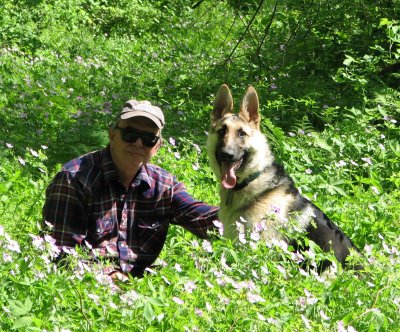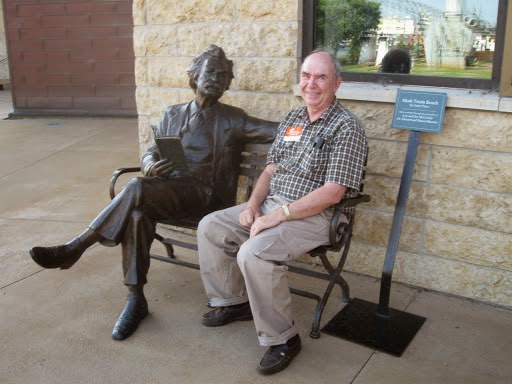It was a canoe trip down the Vermilion River in beautiful
northern Minnesota that unfairly ruined my reputation as a skilled outdoorsman.
Mr. Science (Gary) and I had paddled north forty miles from Vermilion Lake to Crane Lake on the
Minnesota-Canadian border.
There are long quiet stretches of the river that have little
current and very few signs of civilization. In between the quiet water are some wild rapids and portages with names like Vermilion Dam, Shively Falls, Everett
Rapids, Table Rock Falls, Belgium Fred's rapids, DaCaigny Rapids, Chipmunk
Falls, High Falls, the Chute, and the Gorge. Some of these portages are long,
but all are well worn. Timber wolves, moose, black bears, beavers, otters, bald
eagles and osprey are occasionally sighted. White-tailed deer are common.
Four days of awesome scenery, wildlife and some
great fishing had combined to make for a wonderful late summer outing. During the
first three days on the river we had not seen another soul. Then a little
incident occured, which when told and retold put my good outdoor reputation at risk. The
river was mostly placid on that fatefull day. It flowed gently through pine
forest, and acres of wild rice with an occasional Class I or II rapids. Class I
rapids are easy paddling for beginners. Class II means some whitewater which is
relatively easy as long as you have the basic skills. Class III means the
rapids are runnable for experienced and skilled paddlers. There were a few
class III rapids on the Vermillion but we had chosen to portage around all of
them. Erring on the side of caution because even though all our camping gear
was secured by rope in the canoe, we were not willing to risk getting it all
wet. Until the last day that was.

As my canoeing partner and I stood on a
bluff, overlooking a rock strewn whitewater river section of about a quarter of
a mile, we made our decision. The water levels were low. It was late summer.
This left the river more "technical" than dangerous looking. Lots of
maneuvering would be required to safely navigate this stretch which gently
curved out of sight to the right. In high water it looked like it would be too
dangerous. Now it didn't appear to have any insurmountable problems . We went
for it.
After checking to make sure everything was secured properly
I took my usual place in the front of the canoe. In a two man white water canoe
their are distinct roles to play for the paddlers. The person in the back is
the captain of the ship. Kirk of the starship Enterprise. Columbus crossing the
uncharted ocean. Choosing the course. Making the big decisions . Left on the
river. Right on the river. Eddy turn here. Ferry right there.

The man in the bow is an ordinary seaman. On his knees
leaning forward he takes the short view. With absolute concentration, looking
only a few feet ahead he must spot the immediate dangers of rocks, hidden or
not, that must be avoided. Seeing that danger, he yells "draw left or draw
right," and using a draw stroke turns the front of the canoe away from
disaster. It's a lonely job, fraught with tension, but as they say somebody has
to do it. That was my job and I was damn good at it. Especially judging the
water as it boiled over hidden rocks. I avoided them instantaneously.
As we came around the bend of the river there were about 100
yards of rapids before the river spilled into a nice fishy looking pool. I
spotted the pool immediately having taken my eye off the rock bed ahead only
long enough to notice there was a canoe in the pool and two fisherman busily
going about their business. However, the woman in the front was clearly topless. Back to
my job, we had covered about half the distance to the pool, when disaster
struck. I had navigated between two large but only slightly exposed rocks when
we hit a third rock HIDDEN in the flow with a loud bang. Capsizing is always a
possibility but in this case we spun 180 degrees and found ourselves traveling
the last measure of the rapids going backwards. We entered the the pool in less
than elegant fashion. When we had hit the rock I thought I heard someone shout.
I turned my head to see where we were headed. Straight towards the young couple
who were looking somewhat dumbfounded at our unprofessional approach. The
"au naturale" blonde in the bow of the boat was making a panic
stricken effort to cover up.
Laughing at our situation, I was helpless, while
my sturdy and somewhat humorless partner had managed to begin turning us away
so that at least we would not be colliding with the surprised and innocent
bystanders. It was left to me, however, to apologize to these wilderness
devotees. The best I could come up with,on the spur of the moment, as we
drifted by them was to ask the aforementioned woman, "how's the
fishing?" In the years that followed, no matter how my partner told the
story, it was always me, who upon seeing the topless canoeist, had lost his
concentration. Had failed to attend to his duty. Had almost caused a fatal
disaster. All for the sake of a Grecian Goddess of the North Woods. I still
deny it all.















































